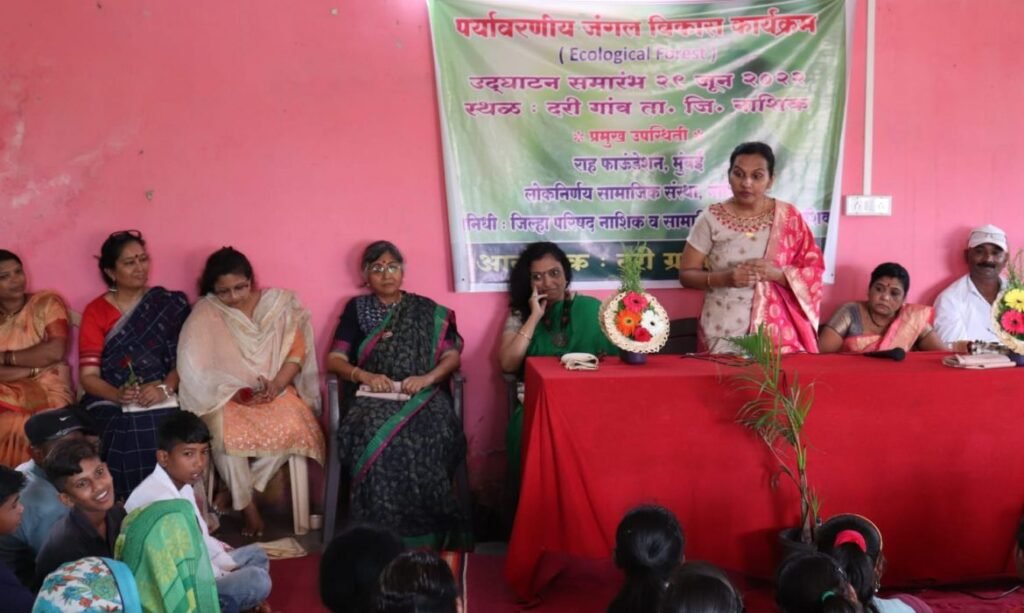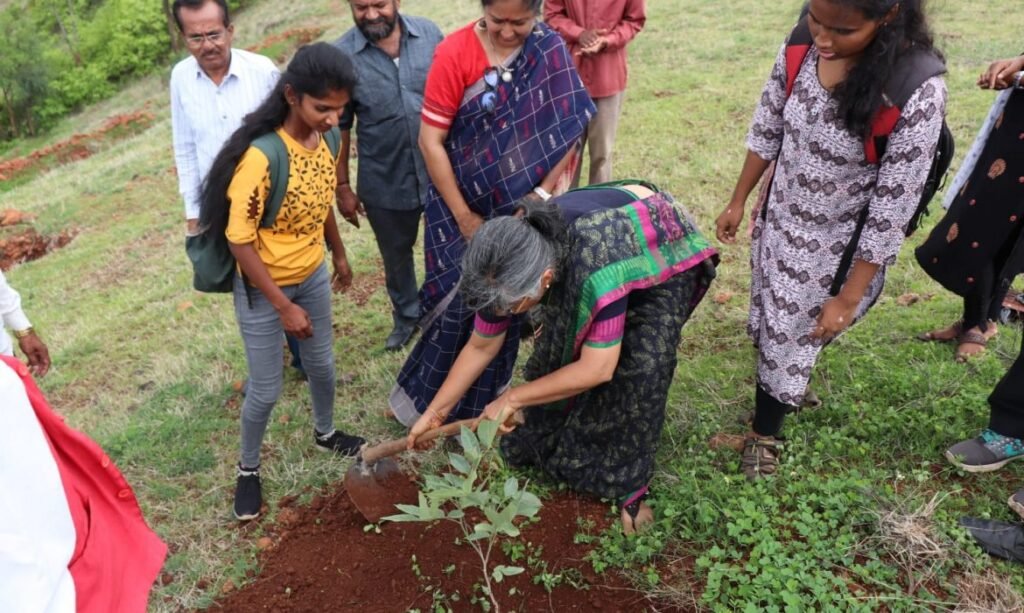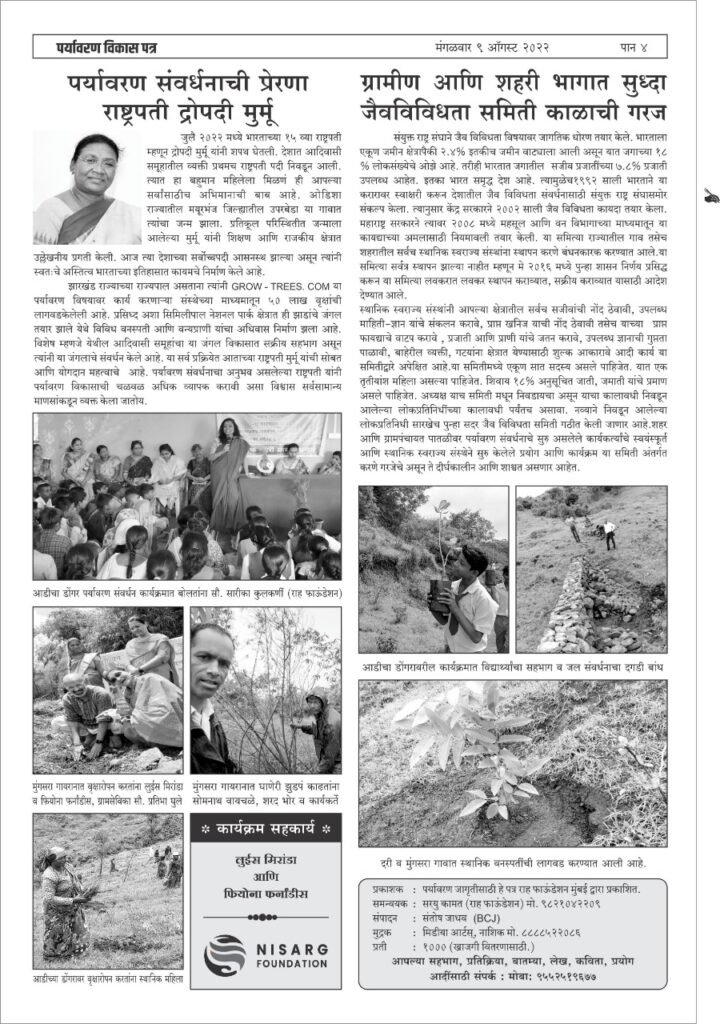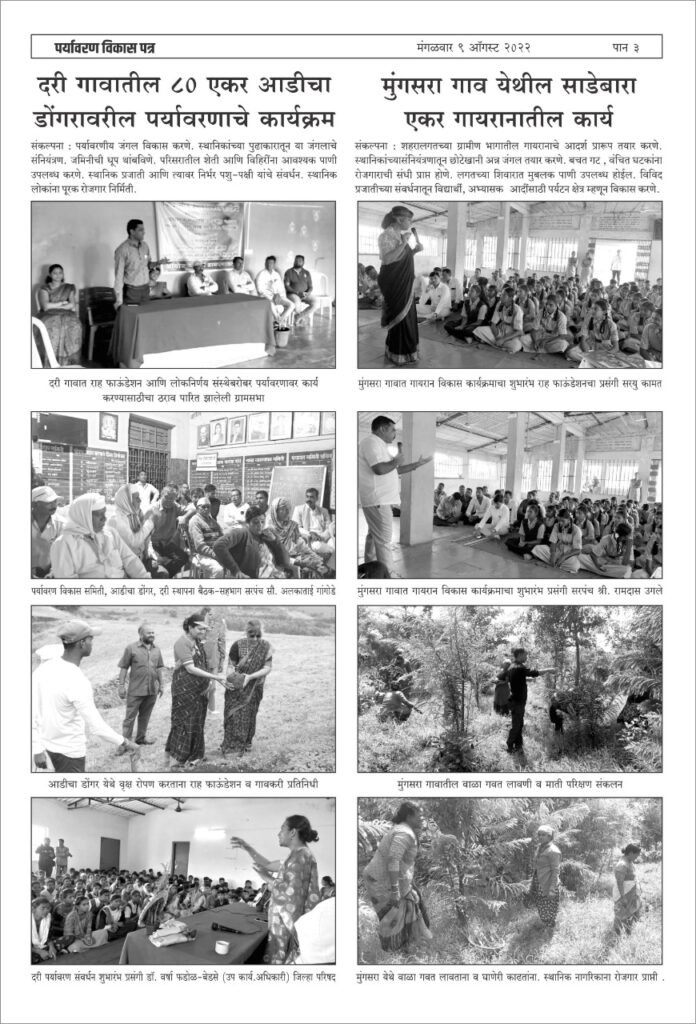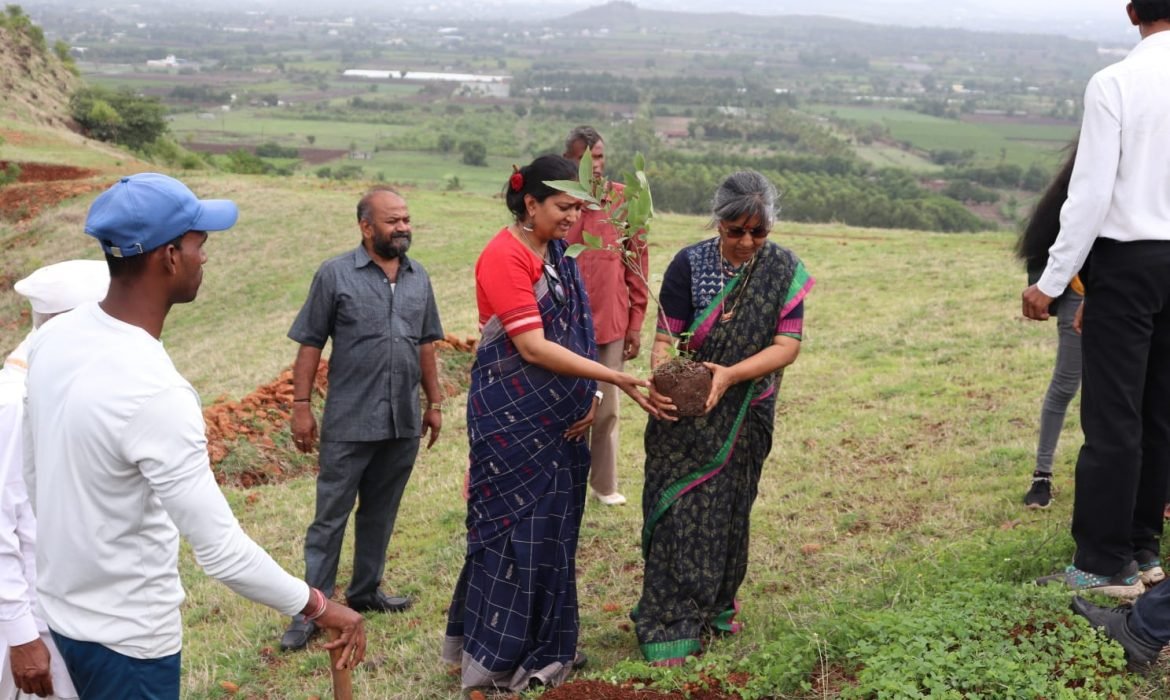
Nashik Hinterland
RESTORATION OF 134 ACRES OF LAND
FOUNDER/ PROJECT LEAD
Raah Foundation (Dr. Sarika Kulkarni)
PROJECT LOCATION
100-acre hill, village Dari, district Nashik – In the Maharashtra state of India, inside the Nashik district, sits the Dari village. It is located 14 kilometres from the Nashik district headquarters and 14 km from the Nashik sub-district headquarters (tehsildar office). According to data available from 2009, Dari village also has a gram panchayat. The settlement has a total size of 971.58 hectares. Dari has a total population of 2,011 individuals, 1,077 of whom are men and 934 of them are women. Dari Village has a literacy rate of 73.40%, with 81.43% men and 64.13% females being literate. Dari Village has roughly 369 residences. Dari village’s administration is handled by a sarpanch, a village representative chosen in the course of local elections. According to 2019 statistics, the hamlet of Dari is part of the Devlali assembly district and the Nashik parliamentary district. The closest town to Dari for any significant economic activity is Nashik, which is located around 14 kilometres distant.

PROJECT GOAL
Raah Foundation aims to revitalize and regenerate the environment and provide sustainable livelihoods to farmers to break out of their vicious cycle of poverty. We have taken up conservation of landscapes through ecological restoration and protecting the biodiversity of common land. This entails soil and water conservation by taking on activities that reduce the velocity of water and control soil erosion, create earthen rings around existing saplings for regeneration , plantation, seeds dispersal, nurturing and monitoring for 3 to 5 years.
PROJECT INTRODUCTION
The Dari project is aimed for the restoration of the village of Dari in district Nashik having 88 acres of commons on a hill called Aadicha Dongar. This hill has been identified as a pilot project for ecological restoration. The broad restoration activities involved are :
a) Base lining parameters such as soil, ground water, biomass, and biodiversity assessment, tree counting.
b) Regeneration activities such as species selection, plantation, vetiver grass plantation, thawla making for existing trees; introducing nutritious grasses and seeding using local forest species; planting thorny saplings for live hedges.
c) Soil & moisture conservation activities such as making loose boulder structures and gabion structures.

DETAILS OF THE PROJECT
This year the project aims to take up regeneration activities for 50% of the hill and balance 50% will be taken up next year. Raah Foundation will nurture the saplings for a period of 5 years till they are independent. One of the greatest threats to ecological regeneration activities is from grazing animals. The gram panchayat along with the village community came to a decision to ban grazing for a period of one year and the owners of the grazing community were advised to use the adjacent hills for grazing. Two security personnel were appointed from the village to ensure ban on grazing is effectively implemented. Over the next couple of months, the project will also geo-tag every tree and provide satellite images to donors so there is complete transparency of the implementation of the activities promised under the project. This ecological restoration effort will catapult a revival of the environment and human lives by providing water security, income security, food security, nutrition security, and ecological security. The effects of this project would be that the wells in the command region around the hill will have higher levels of water and the area under cultivation around the hill would immensely benefit by the ecological restoration. The vetiver grass planted on the hill be a source of income from 6 months onwards. The other forest trees such as beheda, neem, jackfruit, palash will also yield income in years to come. The forests we set up will have the potential to address a myriad of problems for the tribal community, ranging from poverty alleviation as forest resources generate income through employment and through the sale of forest produce, reduce the vulnerability to climate change impacts and safeguard essential ecosystem services such as air and water purification, pollination providing nutrition, controlling soil erosion and carbon sequestration.
SOP
- Create awareness.
- Exposure visit.
- Invite/consult ecological, hydrogeological, wildlife experts.
- Byelaws by the Gram Panchayat to regulate & manage the restored hill.
Read More
- Involve people from all strata, children, forest officials.
- Create Self Help Groups to monetize forest produce.
- Devise strategies to reduce animal-human conflict.
PROJECT IMPACT
- Environmental Revitalization:
- Soil and moisture conservation
- Tree plantation and biodiversity enhancement
- Restoration of degraded landscapes
Read More
- Community Empowerment:
- Sustainable livelihood opportunities provided
- Local community involvement in decision-making
- Formation of Self Help Groups for economic independence
- Water Security and Food Sovereignty:
- Improved water management practices
- Cultivation of nutritious crops for food security
- Strengthened resilience to climate change
- Recognition and Support:
- Partnerships with local government bodies and international donors
- Amplified impact and long-term sustainability ensured through alliances
- Transformative Impact:
- Break in the cycle of poverty
- Enhanced environmental resilience and abundance
- Recognition of the project as a beacon of hope and resilience
SUSTAINABLE DEVELOPMENT GOALS
- Climate Action
- No poverty
- Good health and well being
- Life on Land
- Partnerships for the Goals
